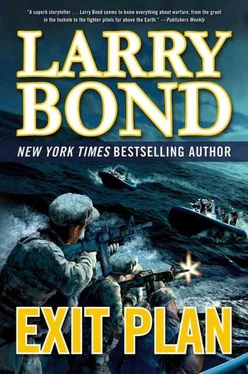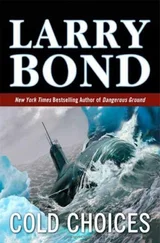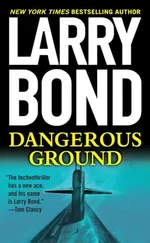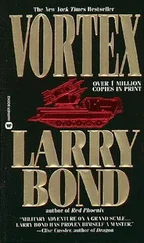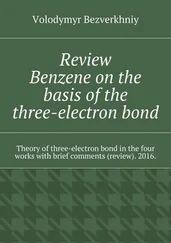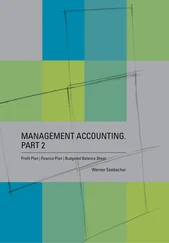The doctor answered, “Of course, you may have access to information I don’t. Is there anything specific we need to worry about? Is there a deadline?”
Moradi shook his head. “Nothing specific. But eventually, we won’t be able to find a key material or technology, even on the black market. What do we do then?
“This is a battle, Dr. Sabet. Even without guns and trenches, the rules are the same. A short battle is better than a long one. Move slowly and your opponent has time to react. He may block your advance or even find a way to defeat you.” He gestured toward the crippled pilot plant. “And it gives your own people more time to make mistakes.”
“You approved the test schedule…”
“Based on their recommendations. I’m not a fool, Doctor, or a scientist. I will let the specialists practice their craft, as long as they get results. And I don’t see any.”
“Are you saying it’s fruitless to…” Sabet started to ask.
“No, Doctor, your scientists and engineers should redouble their efforts. Tell them time is limited, and precious. But if we’re blocked on two paths, it’s time to look for a third.”
“A short cut? General, we are already cutting corners.”
“A bypass, an end-around,” Moradi replied. “We’ve gotten quite good at those.”
* * *
General Moradi bid Dr. Sabet farewell by the Mi-17, then followed his staff onto the helicopter for the trip back to Isfahan. Their mood was upbeat, chatting happily as they belted in, pleased to be returning home after a few days away. Moradi’s own feelings were harder to define. He wasn’t as angry or frustrated as he’d expected to be, or depressed about the program’s setback. Certainly his conversation with the Supreme Leader would be unpleasant. As the helicopter took flight, he realized he’d reached a conclusion.
This wasn’t going to work.
11 March 2013
Liberty Crossing Intelligence Campus McLean, Virginia
Ed Randolph walked into the conference room to find it jammed, buzzing with conversation. Thankfully, government buildings were nonsmoking, but it was still stuffy. With even the janitors cleared for Top Secret, classification hadn’t been much of a barrier to attendance. And there had been rumors. He quickly walked to the front of the room, past the two briefers setting up.
He held up his arms, and the murmur quickly faded. “There are too many people in this room. If you’re not a principal or designated representative, leave. If you’re not from the WMD, Near East, Military Issues, or Science and Technology Offices, leave.” One analyst rose to protest, but Randolph forestalled him. “Yes, Clark, you’re entitled, but not yet. This is only a preliminary meeting. The Office of Transnational Threats will get their chance to review and comment on the draft product.” He raised his voice. “And the fewer discussions I hear in the halls, the better.” There were no more arguments, and people began to file out of the room. As the National Intelligence Officer for Weapons of Mass Destruction and Proliferation, Randolph had the authority to limit the meeting’s attendance.
The Chairman of the National Intelligence Council, General Duvall, appeared in the door and the stragglers made a path for him, then hurried out. Randolph checked his watch: 1500 exactly. He checked the two briefers. One was now standing at the podium while the other tended the computer. They had dealt with the general before. Randolph knew what he expected.
As Duvall sat, the analyst behind the podium smoothly launched into his brief. “Good afternoon, General. My name is Todd Allison. I’m the senior imagery analyst assigned to the Weapons Intelligence, Nonproliferation and Arms Control Center, Central Intelligence Agency. This briefing is classified Top Secret, NOFORN, and contains information from a sensitive HUMINT compartment.” To emphasize that fact, the second slide listed not only the security classification, but all the categories of intelligence involved, and the classifying authorities.
“Next slide,” Allison directed. The bold lettering, “Key Judgments,” at the top of the slide was somewhat misleading, as there was only one short bullet.
“Sir, based on all source analysis, we believe with a high degree of confidence that the Iranians are preparing to test a nuclear device — no earlier than two weeks, but possibly in no more than a month.”
Randolph watched the reactions from those in the room. Gene Cooper, Allison’s boss and the head of WINPAC, sat to one side. He was nodding of course, as was Duvall, who’d been told the reason for the sudden change in his afternoon appointments. Everyone else, the other analysts and the department heads, sat up straighter. Some pulled out notepads. A few turned to speak to their neighbors, but were quickly shushed.
“We understand this runs counter to the last three NIEs, and we’ve taken care to verify both our analysis and sources.” The NIEs, or National Intelligence Estimates, are the official positions of the U.S. intelligence community on a wide variety of issues that affect the security of the United States. It was the National Intelligence Council’s job to draft, coordinate, publish, and update them as needed, combining the data and analytic talent from the entire intelligence community. It took a lot of hard work to get the intelligence community to make up its mind about anything. Changing it was even harder.
“The first indicator was found by Ken Akamatsu at the NSA.” He motioned to the analyst minding the computer. “Ken tracks Iranian construction companies, watching for activity that doesn’t correlate with known projects, or projects that are larger than they should be.”
“Khatam al-Anbia is one of the biggest construction companies in Iran,” Akamatsu broke in and explained. “One of their divisions, ‘Hara,’ recently opened a small office in Qermezin, 250 kilometers to the west-southwest of Tehran.” A map flashed on the screen.
“Information on this came from intercepts of commercial phone traffic we obtained. The Hara division specializes in tunnel construction.”
“The second piece was a sensitive HUMINT report,” said Allison, continuing the presentation. “CIA’s National Clandestine Service provided it to us six days ago after receiving it from a friendly nation.” Randolph knew which nation, and most of the audience might guess it was Israel, but Allison didn’t need to tell them that. “This source reported that Basij units in Markazi Province were ordered to provide troops to patrol an area in the northwest part of the province until regular IRGC units could arrive and set up proper security.”
The Basij was a militia force, first formed during the Iran-Iraq war in the 1980s. Consisting of young men armed with infantry weapons, it was a paramilitary arm that could serve as irregular troops, civic event organizers, or political enforcers as the occasion required. They were locally recruited and often commanded by an imam in the community they came from.
Akamatsu pressed a button and the map zoomed out. “Qermezin is in the northwest part of the province.
“Based on these two reports, and with Mr. Cooper’s approval, we asked NGA to survey the imagery of all Basij barracks in the area.” He clicked again, and a circle appeared surrounding Qermezin, then small crosses appeared inside the circle.
“These are the locations we’ve checked over the past week. We saw increased activity at these five—” Some of the crosses changed color from white to red. “This led to a wide-area search for new construction. Our initial suspicion was a new underground facility was being started — purpose, unknown. What we found was this.”
Читать дальше
